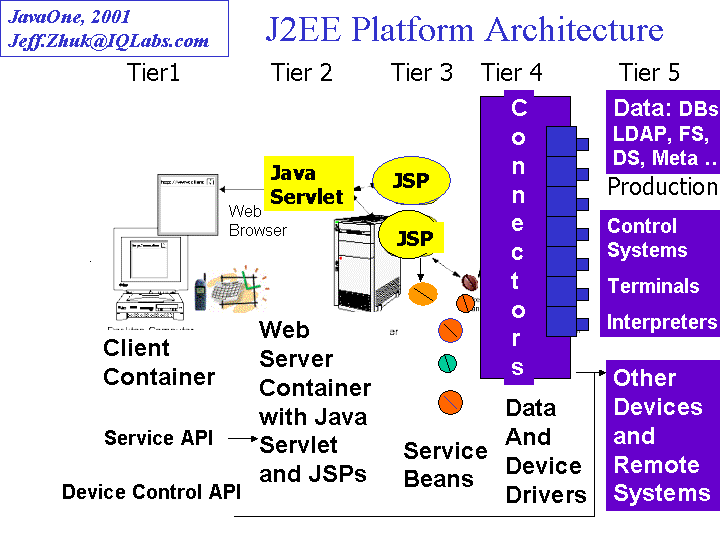Distributed
Object
Technology
|  |

A multi-tier open J2EE based architecture is built as a set of extensible services-frameworks with ability to add/customize services run-time
Tier 1 - Client requests services via XML based service API
Client types: 1) partner application running on a workstation, 2)Web Browser with JavaTM Applet , 3)Wireless device with embedded WML browser or VoiceXML interpreter, 4)Java card technology device, etc.
Tier 2 - Web Server Container with J2EE Servlet and JSP engines where servlet is responsible for session tracking and request distribution, and JSPs provide presentation layer back to the client.
Tier 3 - worker beans providing services.
Worker beans can be (not necessary) implemented as EJBs to gain advantage of security and transaction monitoring services provided by EJB containers.
Tier 4 - Connectors to Data, Remote Systems, etc. (XML API to Tier5)
Unified JNDI based approach is used for data integration describing data types, rules, and structure with XML descriptors. A master controller with XML based API is created to describe a set of operations on device controllers.
Tier 5 - Data Sources, Production Control Systems, end terminals, etc.
Contact:
Jeff.Zhuk@JavaSchool.com,
IPServe.com .
JavaSchool.com
© All rights reserved. Patent Pending.


